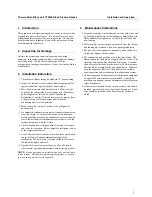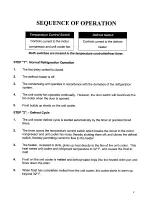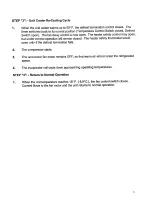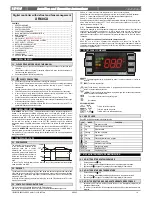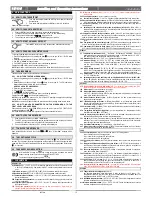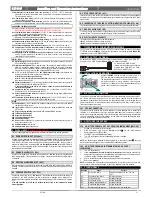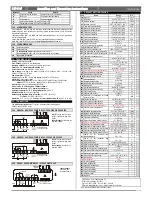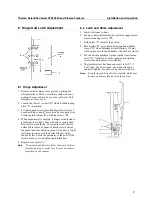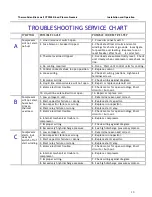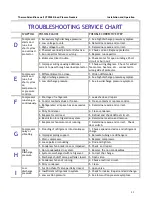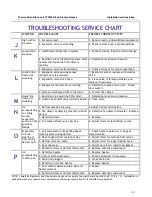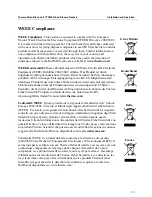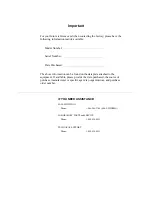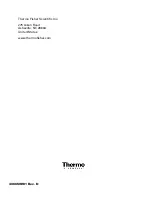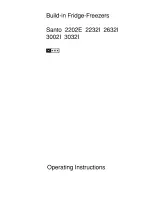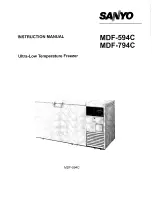
Thermo Scientific Jewett CTF306 Blood Plasma Freezers
Installation and Operation
1
Introduction
This product is a complete packaged unit ready to operate when
plugged into an electrical source. It is not necessary to have a
refrigeration serviceman set the unit in operation. The unit has
been tested prior to shipment. Read all the instructions before
proceeding with installation..
2
Inspection for Damage
Uncrate the product and remove all packing and crating
materials. Inspect the product and parts thoroughly for damage
or missing parts. File all claims for damage with the
transportation company immediately. Do not file claims with the
manufacturer.
3
Installation Instruction
1. The cabinet will pass through a standard 30" door opening.
2. Inspect the interior, exterior and mechanical equipment for
special instruction tags fastened at various points.
3. Move the freezer into the desired location. Make sure the
bottom of the refrigerator is evenly supported. Thin shims
under the points of rest can be used to equalize the
distribution of weight. If the cabinet sets on an uneven floor,
a slight rocking or vibration might result when the
condensing unit is set in operation.
4. Make certain the cabinet is located so the grill panel is
unobstructed.
5. An automatic condensate evaporator eliminates the necessity
for a floor drain. For proper elimination of condensation,
wafers should be placed in the condensate tray located in the
rear of the mechanical compartment in accordance with the
instructions packed with the wafers.
6. The condensing unit is shipped with all service valves open
and ready for operation. Do not adjust the refrigerant valves
or the temperature control.
7. Use of electrical characteristics, other than those specified on
the serial plate will cause permanent damage to the
mechanism. The serial plate is located inside the freezer at
the top of the right hand wall.
8. Operate the freezer for several hours to allow the unit to
reach normal operating temperatures before storing product.
NOTE:
Erratic operation on initial start-up does not indicate a
faulty control. When normal operating temperature is reached,
the condensing unit will cycle regularly.
4
Maintenance Instructions
1. Frequent cleaning of the interior and exterior with water and
a good fungicidal detergent that eliminates harmful bacteria,
stains and other foreign matter will keep the unit fresh and
new looking.
2. Shelves and/or drawers should be removed from the cabinet
and thoroughly scrubbed. Clean door gasket periodically.
3. The unit cooler fan operates continuously when the door is
closed and requires no lubrication.
4. The condensing unit needs no oil or other lubrication. The
finned condenser can become clogged with lint or dust. The
openings between the fins should be kept clean. A vacuum
cleaner or small test tube brush works well for this purpose.
This should be accomplished on an annual basis. Failure to
keep the condenser fins free of dirt and lint will result in
erratic operation and may damage the refrigeration system.
5. Annual inspection of the mechanical refrigeration equipment
by a qualified serviceman is recommended. A qualified
mechanic can frequently make adjustments that will prevent
future breakdown.
6. If the system is opened for any reason, extreme care should
be taken to prevent the entry of moisture-bearing air. A new
drier should be installed in the lines when the system is
closed.
1



